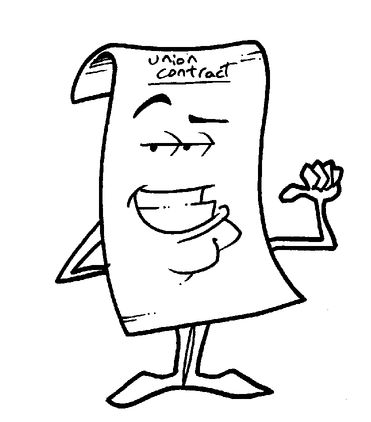
Chapter 24
When There’s a Union Contract
In This Chapter
➤ Uh-oh … here comes a union
➤ The recognition process
➤ How unions operate
➤ Negotiating a labor-management contract
➤ Settling grievances
The influence of labor unions on human resources management is far greater than one might think from just looking at the numbers. Fewer than 15 percent of American workers belong to unions; yet unions dominate such major industries as automobile, steel, communications, and transportation. In recent years, unions have increasingly organized commercial companies such as banks and insurance firms. Now a large number of civil service employees at federal, state, and local levels also are union members.
Unions have an influence even on companies in industries in which there is little or no union activity. This is because the wages, salaries, and other benefits they negotiate for their members become benchmarks that set the standards for the rest of the economy. In this chapter we’ll look at union-management relations, how unions operate, and the interactions between managers and their employees when a union is in the picture.
The Labor Relations Process
In Chapter 3, “Still More Laws,” we reviewed the National Labor Relations Act as amended by the Taft-Hartley Act, which governs the relationship between management and labor unions. Each party has certain rights and obligations that must be adhered to under the law. The National Labor Relations Board sets rules implementing the law regarding union recognition and contract negotiation. Let’s see how this works in practice.

Management Miscellany
The highest percentage of union membership in the United States was in 1945 when 45.5 percent of the labor force was organized. This was up from 11.6 percent in 1930. Since 1945 union membership has declined every year; it was down to 13.9 percent in 1999.
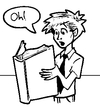
Meanings and Gleanings
An authorization card is a statement signed by an employee authorizing the union to act as his or her representative for the purposes of collective bargaining, discussed later in this chapter.
Enter the Union
You have a group of disgruntled employees. They feel they’re underpaid, overworked, work in unpleasant surroundings, have dogmatic bosses, or have other gripes about the company. They decide they can’t get the company to change things by themselves, so they invite a union to come in.
Here’s another scenario: A union targets your company and sends an organizer to sell the workers on the need for a union. In either case, the next steps are much the same. The union representative will approach the workers individually or at meetings, discuss their concerns with them, and tell them what steps must be taken to form the union and obtain recognition.
Recognizing the Union
The first step toward recognition is to obtain authorization cards from each employee. The number of signed authorization cards demonstrates the potential strength of the union. At least 30 percent of the employees must sign such cards before the National Labor Relations Board (NLRB) will conduct a representation election.
Once the authorization cards have been obtained, the union might petition the local office of the NLRB asking that an election by secret ballot be held. The agency sets a date. Before the election takes place, both the union and management conduct intensive campaigns to win workers over to their side.
Most employers fight hard to defeat unionization. However, their efforts are restricted by law. Employers must not threaten employees with loss of their jobs, or loss or reduction of other benefits; or make promises to improve conditions if the union is defeated. However, they can express their views about the disadvantages of being represented by a union. If the union has been involved with strikes against other employers, the company might stress this and warn employees against possible work disruption and loss of income. They might remind them that union dues and assessments can be costly.
Once the union is certified either by consent or by an election, representatives of management and the union bargain collectively to reach an agreement on the labor contract. This may include increases in wages, addition of benefits, and changes in working rules, as well as special rights given to the union and rights retained by management. Once the contract is signed, both parties must live up to its contents.
The Structure of the Union
Most unions in the United States are hierarchical. At the bottom is the “local”; then comes the national or international union. All are coordinated by the American Federation of Labor/Congress of Industrial Organizations (AFL/CIO). The AFL/CIO is the central body that coordinates labor activities in the United States and Canada. Its primary function is lobbying congress for labor legislation, coordinating organizing efforts of affiliated unions, and providing public relations on labor-union matters.
Locals
The local is the unit that represents the employees of a particular bargaining unit. The bargaining unit in an industrial union might be one department, a division, or the whole company. In a craft union, the local usually represents just the employees in that craft. For example, in the same company or department there might be separate bargaining units for the electricians, the machinists, and the draftsmen.
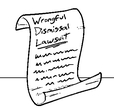
Personnel Perils
If more than 50 percent of your employees have signed authorization cards, it doesn’t pay to go through the expense and aggravation of an election. Unless you feel you have a good chance of changing enough votes, it’s better to accept the certification of the union on the basis of the card count.
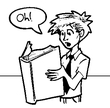
Meanings and Gleanings
Industrial unions represent all workers—skilled, unskilled, and semi-skilled in the same industry, such as all employees of an automobile plant, a textile mill, or a garment factory. Craft unions represent skilled craft workers such as machinists, carpenters, plumbers, and similar professionals.
National Unions
The locals, whether they are craft or industrial, are the basic units of a national union (also called an international union) such as the United Mine Workers, the Teamsters International, and the National Education Association.
Most national unions have regional offices; however, they are primarily administrative, not policymakers. The national union establishes the rules and policies followed by the locals. It sets guidelines for collective bargaining and provides help in negotiations, legal matters, and grievance procedures to the locals. Most managers rarely see representatives of the national (or international) unions except when an entire industry negotiates industry-wide contracts, or very large companies negotiate blanket coverage for all their facilities.
Who’s Who in the Union
There are several layers in the union that managers must recognize. Most of the day-to-day contacts will be with the shop steward or representative of the local. Negotiations and more serious problems might require dealing with representatives of the national (or international) organization. The following sections discuss some of the union roles.
Shop Steward
The shop steward is an employee of the company who has been elected by union members in the department to represent their interests on the spot. This worker does his or her regular job on a full-time basis, but handles matters that arise between workers and managers on a day-to-day basis. Much of this work has to be done after hours; however, when grievances are filed the steward might have to be relieved of regular duties to participate. In these situations, the union makes up for earnings lost by the steward while away from the regular job.
Business Representative
This functionary is a full-time employee of the local union, and may or may not come from the ranks of the company. Among his or her duties are negotiating contracts with the employer, helping union members with job-related problems, counseling the shop steward on interpretations of the contract, and dealing with grievances that can’t be resolved by the shop steward. In a small local, the business representative usually is the chief administrative officer of the local.
Officers of the Local
In some locals, the president and other officers are company employees, elected for a specified term. They deal with routine organizational matters such as conducting meetings, collecting dues, dispensing funds, arranging for conventions, and so on. The real leader of the union is the business representative, who handles grievances with the company, settles internal disputes among members, and acts as liaison with the regional, national, or international union.
In other unions, the local president is the real boss of the union. There are numerous cases in which the president of a local dominates the union for years and is paid an unusually high salary. If your employees are unionized, learn who the real boss of the union is. When serious problems arise, it’s that person you have to deal with.
Negotiating the Contract
The National Labor Relations Act requires that once a union has been certified, the employer is obligated to bargain in good faith with the union representatives. Collective bargaining is the negotiating between a company and the labor union that has been certified to represent its employees. This collective bargaining involves rates of pay, hours of employment, benefits, working conditions, and other conditions of employment.
To put pressure on management to accede to its demands, unions might threaten and sometimes carry out these tactics:
➤ Strike
➤ Picket
➤ Boycott
The most feared tactic of a union is a strike. Employees walk off the job and refuse to work until their demands are met. This is costly to both the company and the men and women who lose their wages while on strike. Additionally, it causes bitterness, antagonism, and emotional distress, which often last long after the strike is settled.
Some affluent unions can afford to pay strikers at least part of their wages—but usually this is very limited. Most companies continue to operate—on a reduced scale—during a strike. Management personnel roll up their sleeves and take over the strikers’ jobs. Nonunion members continue to work. In many cases, outside help is brought in through temp services or direct recruiting of strikebreakers. Although there have been some long and bitter strikes, most strikes are settled rapidly when parties compromise on the demands. However, even after a short strike there remains rancor between those who struck and those who continued to work.

Management Miscellany
The number of strikes in the U.S. has declined over the years. According to the Bureau of Labor Statistics, there were only 17 strikes involving 1000 or more workers in 1999 compared to an average of 288 in the 1970s.
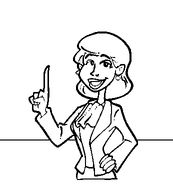
Management Miscellany
Strikebreakers are persons hired by a company to replace union members who go on strike, or those employees who continue to work during a strike. They are referred to by the union as “scabs.” Pickets are union members who stand or march in front of a building to discourage entry by nonstriking employees or customers. Boycotts are to discourage customers from purchasing products of a company at which the union is striking.
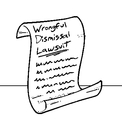
Personnel Perils
A rarely used management tool is the lockout. Instead of waiting for the union to strike to resolve an impasse in the negotiations, the company literally locks union members out of the facility and either closes down completely or hires a new crew. Lockouts are expensive, and once the contract is agreed on they have to re-admit the locked-out people. This results in low morale and a poor public image.
Picketing is one weapon of strikes. Its aim is twofold: Most important is to keep others from crossing the picket line and going to work. You’ve seen them marching up and down in front of a plant, store, office, or warehouse. They carry signs and shout about unfair treatment.
A boycott also can be a powerful tool, particularly when employees of suppliers, repair and service units, and others who are sympathetic to unions refuse to cross the picket line. This prevents delivery of materials and service equipment, and other needed services. In retail and other consumer-oriented businesses, this can significantly reduce business.
The Grievance Procedure
Once the contract is agreed to, most of the contacts between the company and the union will involve grievances. Typical union contracts set up a standard grievance procedure. Every complaint an employee has about the job is not necessarily a grievance. As a matter of fact, most are just gripes. A gripe is an informal complaint about working conditions.
A grievance is a formal complaint concerning a violation of a union-management agreement. For example, the union contract states that supervisors must give employees 24 hours’ notice if asked to work overtime. This can be waived under certain specified circumstances. At 3 P.M. Stan’s supervisor orders him to work from 5 to 7 P.M. Stan refuses. The supervisor cites him for insubordination and suspends him for three days. Stan files a grievance.
With the assistance of the shop steward, a formal grievance is written and presented to the supervisor. The shop steward presents Stan’s case. The supervisor explains the special circumstances that required the overtime. The steward disagrees. He points out that other workers were available to do that work. The supervisor refuses to change his mind.
The next step is to bring the grievance to the next higher level. This might be the department head or plant or office manager, along with the business agent or a local union official. They try to resolve the problem. Most problems such as Stan’s overtime can be resolved at this level.
However, if this doesn’t succeed, the next step might be handled by the HR manager and the chief union official in the local or the regional office of the union. In more complex matters, the final step before arbitration might be negotiated by a senior corporate executive or attorney, and an equivalent representative of the union. This happens particularly when the grievance involves a major policy matter or sets a precedent that might have extensive impact.
In cases in which no solution is reached at this point, most contracts call for arbitration. The union and management choose a neutral person or group of people to hear the case and make the decision. Typically, a three-person panel might arbitrate. A list of prospective arbitrators is given to each side and an agreement is reached on which three to use. Both parties agree to accept the decision and no appeals may be made.
The Least You Need to Know
➤ At least 30 percent of the employees must sign authorization cards before the National Labor Relations Board (NLRB) will conduct a representation election.
➤ Most of the day-to-day union contacts are with the shop steward or representative of the local. Negotiations and more serious problems might require dealing with representatives of the national (or international) organization.
➤ A strike is the most feared tactic a union takes. Strikes are costly to both the company and the men and women who lose their wages while on strike.
➤ A typical grievance procedure starts with the worker (represented by the shop steward trying to resolve the problem with the supervisor). Next step: union rep with higher-ranking manager; next step: senior union rep with senior executive; if that fails: arbitration.
..................Content has been hidden....................
You can't read the all page of ebook, please click here login for view all page.
